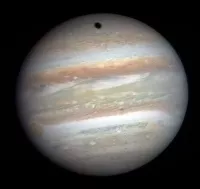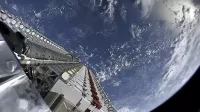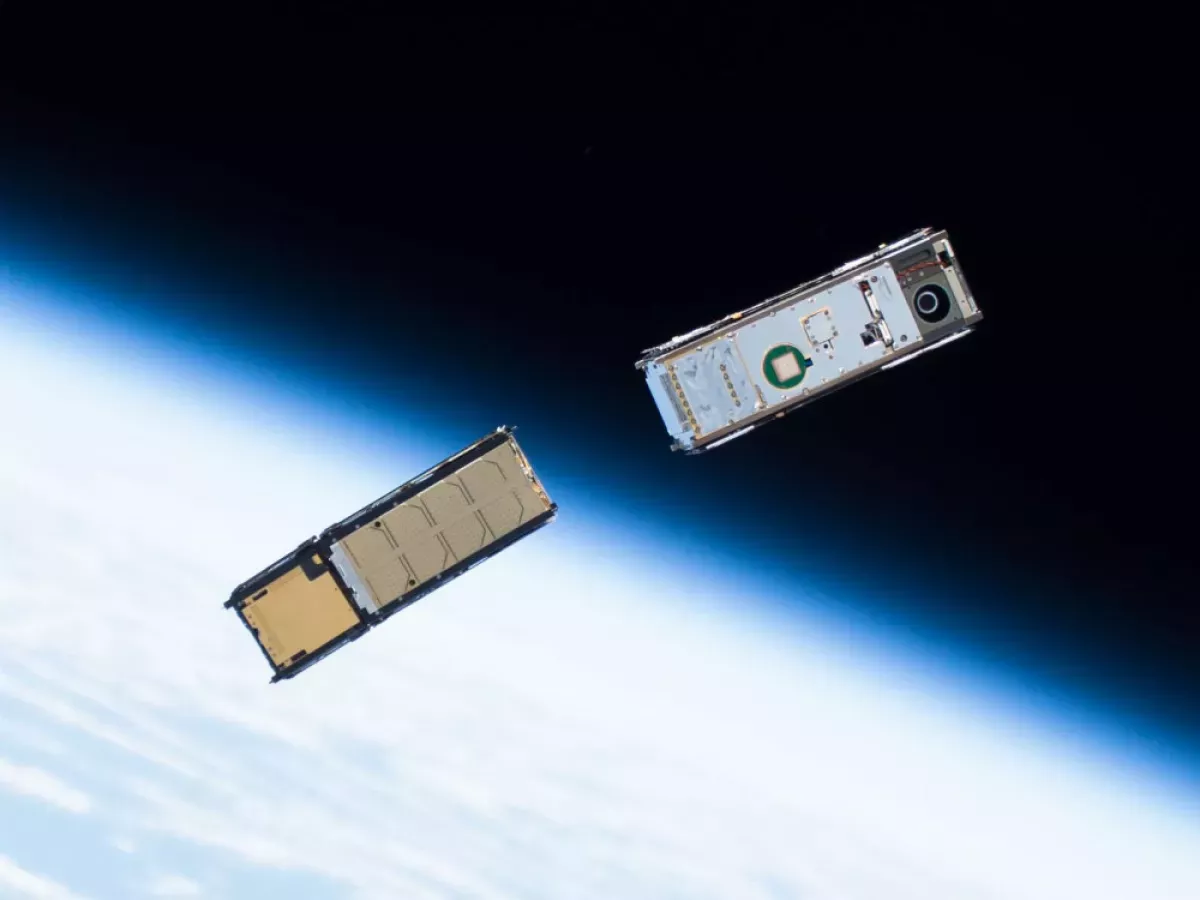Satellites, often spacecraft, are objects intentionally placed into orbit around celestial bodies. They serve numerous purposes, including communication, weather forecasting, navigation, broadcasting, scientific research, and Earth observation. Satellites also have military applications such as reconnaissance, early warning systems, and signals intelligence. Defunct satellites and final rocket stages also contribute to the population of objects in space.
1903: Publication of "Exploring Space Using Jet Propulsion Devices"
Konstantin Tsiolkovsky published "Exploring Space Using Jet Propulsion Devices" in 1903, laying the groundwork for the use of rocketry in space exploration.
1928: Publication of "The Problem of Space Travel"
Herman Potočnik's book "The Problem of Space Travel" was published in 1928, exploring the potential of orbiting spacecraft for observation and scientific experiments.
1935: Death of Konstantin Tsiolkovsky
Konstantin Tsiolkovsky, a pioneer in astronautic theory, passed away in 1935.
1945: Arthur C. Clarke's Vision of Communication Satellites
In 1945, Arthur C. Clarke detailed the potential of communication satellites for global communication in an article for Wireless World.
1945: U.S. Exploration of Orbital Satellites
The United States began considering launching orbital satellites in 1945.
May 1946: Project RAND's "Preliminary Design of an Experimental World-Circling Spaceship"
In May 1946, Project RAND released a report outlining the potential of a satellite vehicle for scientific, political, and propaganda purposes.
1946: Lyman Spitzer's Proposal for an Orbiting Space Telescope
In 1946, Lyman Spitzer put forward the idea of an orbiting space telescope.
February 1954: Publication of "Scientific Uses for a Satellite Vehicle"
Project RAND published "Scientific Uses for a Satellite Vehicle" in February 1954, further exploring the potential scientific applications of satellites.
June 1955: Publication of "The Scientific Use of an Artificial Satellite"
In June 1955, "The Scientific Use of an Artificial Satellite" by H.K. Kallmann and W.W. Kellogg was published, expanding on the scientific uses of artificial satellites.
July 1955: Announcement of U.S. Project Vanguard
The White House announced Project Vanguard in July 1955, aiming to launch U.S. satellites by the spring of 1958.
1955: Project Orbiter
In 1955, the U.S. Army and Navy worked on Project Orbiter, with competing programs using the Jupiter C rocket and the Vanguard rocket for launching a satellite.
October 4, 1957: Launch of Sputnik 1
On October 4, 1957, the Soviet Union launched Sputnik 1, the first artificial satellite, marking a significant milestone in space exploration and igniting the Space Race.
October 1957: Launch of Sputnik 1 and its impact
In October 1957, the Soviet Union launched Sputnik 1, the first artificial satellite. This event led to the discovery of the Earth's Van Allen radiation belts and sparked the Space Race between the United States and the Soviet Union during the Cold War.
November 1957: Launch of Sputnik 2 with Laika the Dog
Sputnik 2, carrying the first living being in orbit, a dog named Laika, was launched in November 1957.
1957: Soviet Union's Announcement of Satellite Launch
The Soviet Union announced its intention to launch a satellite in 1957.
January 1958: Launch of Explorer 1
Explorer 1 became the first artificial satellite launched by the United States in January 1958, leading to the discovery of the Earth's Van Allen radiation belts.
1958: Target Launch Date for Project Vanguard
The United States aimed to launch satellites under Project Vanguard by the spring of 1958.
April 1, 1960: Launch of TIROS-1
TIROS-1, launched on April 1, 1960, sent back the first television footage of weather patterns from space.
June 1961: 115 Earth-Orbiting Satellites Cataloged
By June 1961, the United States Space Surveillance Network had cataloged 115 satellites orbiting Earth.
December 1964: Launch of San Marco 1
Italy's first satellite, San Marco 1, was launched in December 1964 using a U.S. Scout rocket, highlighting the reliance on foreign rockets for early national satellite launches.
November 1965: Launch of Astérix (A-1)
France launched its first satellite, Astérix (A-1), on November 1965, becoming the sixth country to have an artificial satellite and the third to launch one using its own rocket.
1972: Introduction of the HS-333 Satellite Bus
The first standardized satellite bus design, the HS-333 for geosynchronous communication satellites, was launched in 1972.
1997: Release of FreeFlyer Software
FreeFlyer, a commercial off-the-shelf software application for satellite mission analysis, design, and operations, was released in 1997.
2007: China's Anti-Satellite Test Sparks Controversy
In 2007, the Chinese military conducted an anti-satellite test by shooting down an aging weather satellite. This event triggered significant controversy and international concern, as it highlighted the potential for militarization of space and the vulnerability of satellites.
February 2008: US Navy Destroys Defunct Spy Satellite
In February 2008, the US Navy demonstrated its anti-satellite capability by shooting down a defunct spy satellite. This event followed China's destruction of an aging weather satellite in 2007, showcasing the growing international focus on anti-satellite technology.
November 2015: Russia's Successful Anti-Satellite Missile Test
In November 2015, after two previous unsuccessful attempts, Russia successfully conducted a flight test of its Nudol anti-satellite missile. This achievement solidified Russia's position among nations with demonstrated capabilities to eliminate satellites in orbit.
March 2019: India Joins the Anti-Satellite League
On March 27, 2019, India successfully shot down a live test satellite at an altitude of 300 km within a mere three minutes. This accomplishment marked India as the fourth country globally to possess and demonstrate the ability to destroy operational satellites, further intensifying the geopolitical landscape surrounding space technology and security.
2020: The Rise of Demisable Satellites
In 2020, a significant trend emerged with the increase of satellite constellations like SpaceX's Starlink. These satellites were designed to be 100% demisable, burning up completely upon re-entry into the atmosphere at the end of their operational life or in case of premature failure. This marked a shift towards mitigating space debris and orbital pollution.
2020: Growing Concerns about Orbital Pollution
In 2020, the astronomical community, particularly organizations like the International Astronomical Union (IAU), raised serious concerns about the increasing orbital pollution caused by the proliferation of satellite constellations, especially those like SpaceX's Starlink. The SATCON1 workshop, held in the same year, concluded that these large constellations could significantly hinder astronomical research.
2021: Dominance of Earth Observation Satellites
By 2021, there were over 950 Earth observation satellites in operation, reflecting the growing importance of remote sensing for various applications. Planet Labs emerged as the leading operator of these satellites, highlighting the increasing privatization and commercialization of space-based Earth observation.
2021: Testing Wood in Space
In 2021, as part of the LingoSat project, JAXA and NASA sent wood samples to space. This experiment was conducted to evaluate the resilience of wood as a potential construction material for satellites, exposing it to the extreme conditions of space.
2024: Launch of the Wooden Satellite Prototype
In the summer of 2024, Japan's space agency (JAXA) and NASA plan to launch LingoSat, a prototype satellite constructed primarily from wood. This launch follows years of research and development, including sending wood samples to space in 2021 to test the material's durability in the harsh conditions of space.
Mentioned in this timeline

Jupiter is the fifth and largest planet from the Sun...

Starlink is a satellite internet constellation operated by Starlink Services...

SpaceX founded in is a private American aerospace manufacturer and...

The White House located at Pennsylvania Avenue NW in Washington...
The Union of Soviet Socialist Republics USSR existed from to...
India officially the Republic of India is a South Asian...
Trending
Benin officially the Republic of Benin is a West African country bordered by Togo Nigeria Burkina Faso and Niger Its...
The foot is a crucial anatomical structure present in numerous vertebrate species Serving as the terminal part of a limb...
17 days ago Polls Indicate Negative Voter Sentiment Towards White House Handling of the Economy.

26 days ago Florence Pugh Addresses Online Abuse Regarding Zach Braff Relationship and its Impact.

6 months ago Aljamain Sterling questions Sean O'Malley's stardom, personality deemed 'a little dry'.
Brent Pry is an American football coach who recently served as the head coach at Virginia Tech from until his...
Popular
Matt and Ross Duffer known as the Duffer Brothers are...
Aftyn Alyssa Behn is an American politician currently serving as...

Candace Owens is an American conservative political commentator and author...

XXXTentacion born Jahseh Dwayne Ricardo Onfroy was a controversial yet...

Ilhan Omar is an American politician currently serving as the...

Lane Kiffin is an American football coach currently serving as...
